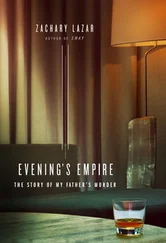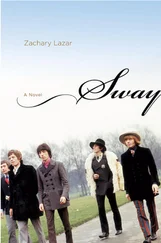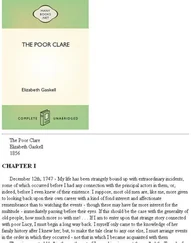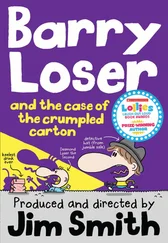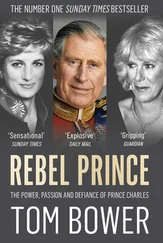I can’t say for certain who sent me this e-mail, which came from a strange address, though of course I have a guess. I haven’t heard again from Voss in the eight months since my return to New York.
23) THE CITY OF DAVID
Just before I left for Israel last May, the New York Times ran a piece about the City of David, a joint effort between the Israeli government and a private group called Ir David to turn this section of Jerusalem into a tourist zone based on the premise that it is the “ancient ridge where King David is said to have conquered an existing stronghold and laid the foundations of Jewish Jerusalem 3,000 years ago.” The article reported that “garbage dumps and wastelands are being cleared and turned into lush gardens and parks, now already accessible to visitors who can walk along new footpaths and take in the majestic views.” The piece also discussed the removal of Palestinians who live in the area, an impoverished district called Silwan, in order to create, in the words of a peace activist, “an ideological tourist park that will determine Jewish dominance in the area.” A picture emerged in the article of a project combining gentrification, tourism, and archaeology as a means of making it “harder than ever to divide Jerusalem as part of a two-state solution.”
The site was partly open during my trip. There was a courtyard full of Israelis singing loud songs in Hebrew, a beautiful girl soldier with a machine gun. On the road that led to the ticket booth, a wall had been erected to screen out the ongoing construction in Silwan. Painted on the wall was a cheerful mural showing a father and son riding the two-wheeled motorized scooters called Segways, a view of the Old City behind them.
You buy your ticket and walk down steep stairs through the archaeological excavation — cisterns and baths made of quarried stone. At the bottom is the entrance to Hezekiah’s Tunnel, an underground passage that leads to the biblical Pool of Siloam, the source of ancient Jerusalem’s water ever since the days of the Jebusites. Your admission fee buys you a tiny LED flashlight the size of a quarter. For whatever reason, I was the only one there that morning. The water at the mouth of the tunnel rushed so quickly over the slick stones that it seemed dangerous, even impassable, and I hesitated for a while before wading in up to my knees and proceeding slowly forward into the entrance. The tunnel is 500 meters long but it feels much longer once you’re inside it. It makes a sharp left turn and then it’s absolutely pitch dark inside. In 700 BC, King Hezekiah’s engineers began digging at either side of the cavern and managed somehow to meet in the middle — with the aid of the flashlight you can still see the marks of their tools. Someone yodeled in the distance far behind me. I kept walking, the walls hardly much wider than the width of my body and the ceiling so low I had to crouch. I felt that if my flashlight went out or I dropped it, I would be lost there for a long time. The water rushed at my ankles and the way ahead got narrower and more jagged. In a tunnel that narrow, you can’t turn around because you can’t pass anyone coming the other way. You have to walk to the end. The yodeling was muffled and eerie. The darkness was so total that it made no difference if you closed your eyes or opened them. I turned off my flashlight for a moment and stood there taking it in.
9 Immigrants, Part 3 1972/2010
He didn’t know where he would live now, maybe Paraguay — some visas had been arranged there, though he knew almost nothing about the country and was afraid to think about it. It was November 5, 1972, two months after he’d lost his case before the Israeli supreme court, just five days before the expulsion order was to go into effect, and he sent some bags ahead with a friend, then traveled alone that night from Tel Aviv to Zurich, where the friend met him with boarding passes and transit visas to Asunción, Lansky’s documents under the name “Mr. Meyer.” Gray suit, dress shirt from Brooks Brothers, madras tie — he was already sticky under his clothes by the time the plane had left Lod. They made it across the Atlantic that night to Rio de Janeiro, then caught a connection to Buenos Aires a few hours later the same morning. Israel, Switzerland, Brazil, Argentina. Soiled from the stuffy cabin air, waiting for the flight to Paraguay, he decided to get a shave in the airport barbershop. It was just hours later, when they landed in Asunción, that he realized the plan had failed. Two Paraguayans, then an American agent of some kind, came into the cabin and said in English that he was not permitted to disembark. It turned out that the flight to Asunción had further stops in La Paz, Lima, Panama City, and finally Miami. It turned out that all the FBI had to do, once he’d boarded in Buenos Aires, was to keep him on the plane all the way to its terminus. America. Thirty-six hours in transit, stops in seven countries. They met him at Miami International and drove him to the FBI office downtown, where his lawyer went out to get him a piece of bread and some milk for his ulcers.

In her living room on Long Island, Gila read the letter another time, then folded it into thirds and put it into the envelope. She turned down the stereo and stood there with her eyes closed, waiting. She was going to mail it care of Hannah Groff’s editor but you didn’t have to do that anymore. It was 2010 and Hannah of course had her own website. Her address was right there on the website. She put the stamp on the letter and left it on the sideboard and went into the kitchen for a glass of water and took the morning’s dose of aprepitant, which helped with the nausea during her chemotherapy treatments. She ran some cool water over her face in the kitchen sink, pressing her fingertips to her eyes. It had been twenty-eight years since she’d seen Hannah. Maybe they could talk now. They could talk about some of the things Hannah didn’t know — they could talk about Meyer.
Forty minutes sitting with her hands over her face, trying not to vomit. She took another shower and the lavender scent of the soap was mild enough to be soothing. The silk pajamas hurt her skin, so she put on some cotton ones. She looked at the letter on the sideboard, then she went back again to Hannah’s story about David Bellen.
10 Reunion NEW YORK, 2010
1.
I received Gila Konig’s first letter in the spring of 2010, about six months after my piece on David Bellen had first been published. Apart from the Bellen story, I hadn’t written any of the book you’re reading now — I didn’t know yet that the Bellen piece would become part of the larger story I would eventually, after some resistance, find myself telling. As I said before, when Gila told me about her past in Tel Aviv in 2010, I knew almost nothing about Meyer Lansky and wasn’t very interested in him.
I saw her only one time after I was twelve, at a restaurant on 79th Street, just a few blocks from where my father had run his antiques business back in 1982, the last time we’d seen each other. It was a bright sunny afternoon and Gila wore a cream-colored hat made of soft straw to protect her skin from the sun. That May, at the age of seventy-one, she had undergone what would turn out to be her final round of radiation and chemotherapy treatments. Her hair beneath the hat had started to grow back in, gray and straight and close to the scalp. I had forgotten the delicateness of her cheekbones, her lips. We sat upstairs on the restaurant’s covered porch, fans hung from the ceiling, waiters moving by in white jackets, as in some old film whose setting was Capri. I smiled at Gila the way I sometimes cry at a movie that isn’t really sad. She had written me a few times now. I imagined her motives for seeking me out were bound up in her illness. Because I write for a living, people I don’t know or hardly know have frequently approached me on the slimmest of pretexts to set down their life stories. It just happens, more than I would have ever expected. Particularly in the face of illness or old age, they come to me with secrets that no longer seem important enough to be ashamed of. I listen to the crux of their lives and I tell them no, I’m sorry, I’m busy with other projects. What I can’t explain is that it’s not that their life story isn’t interesting, it’s that everyone’s life story is interesting.
Читать дальше


